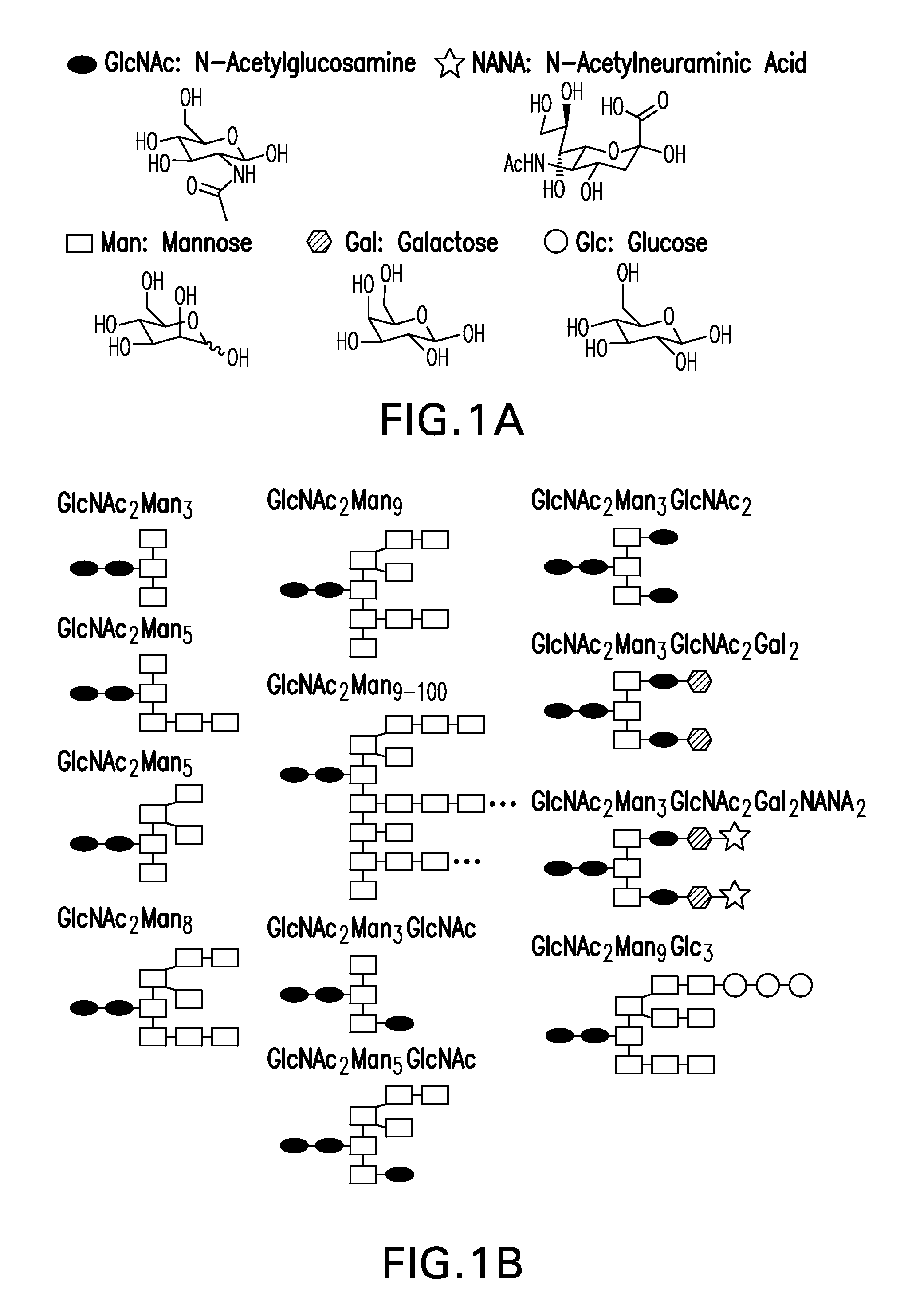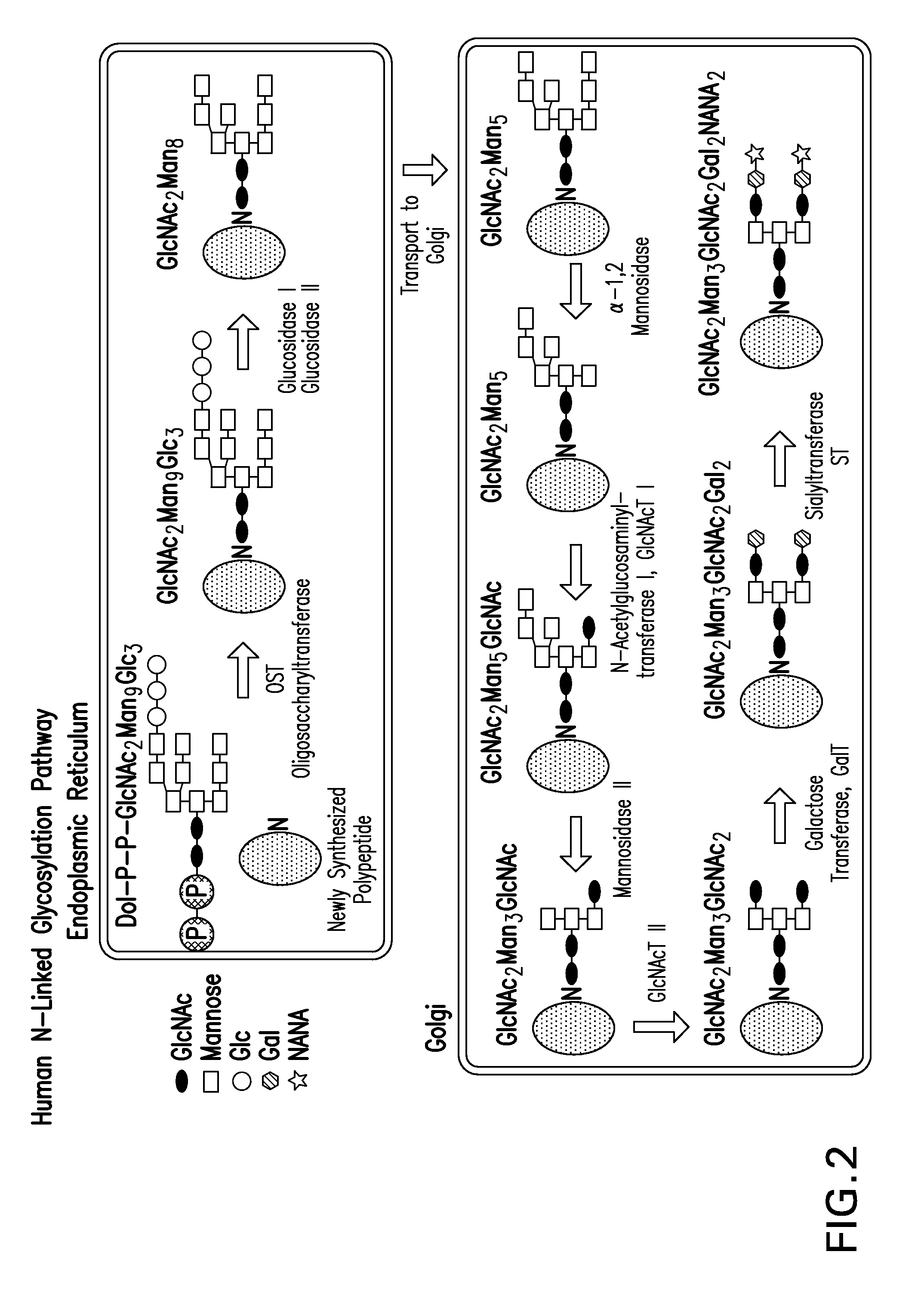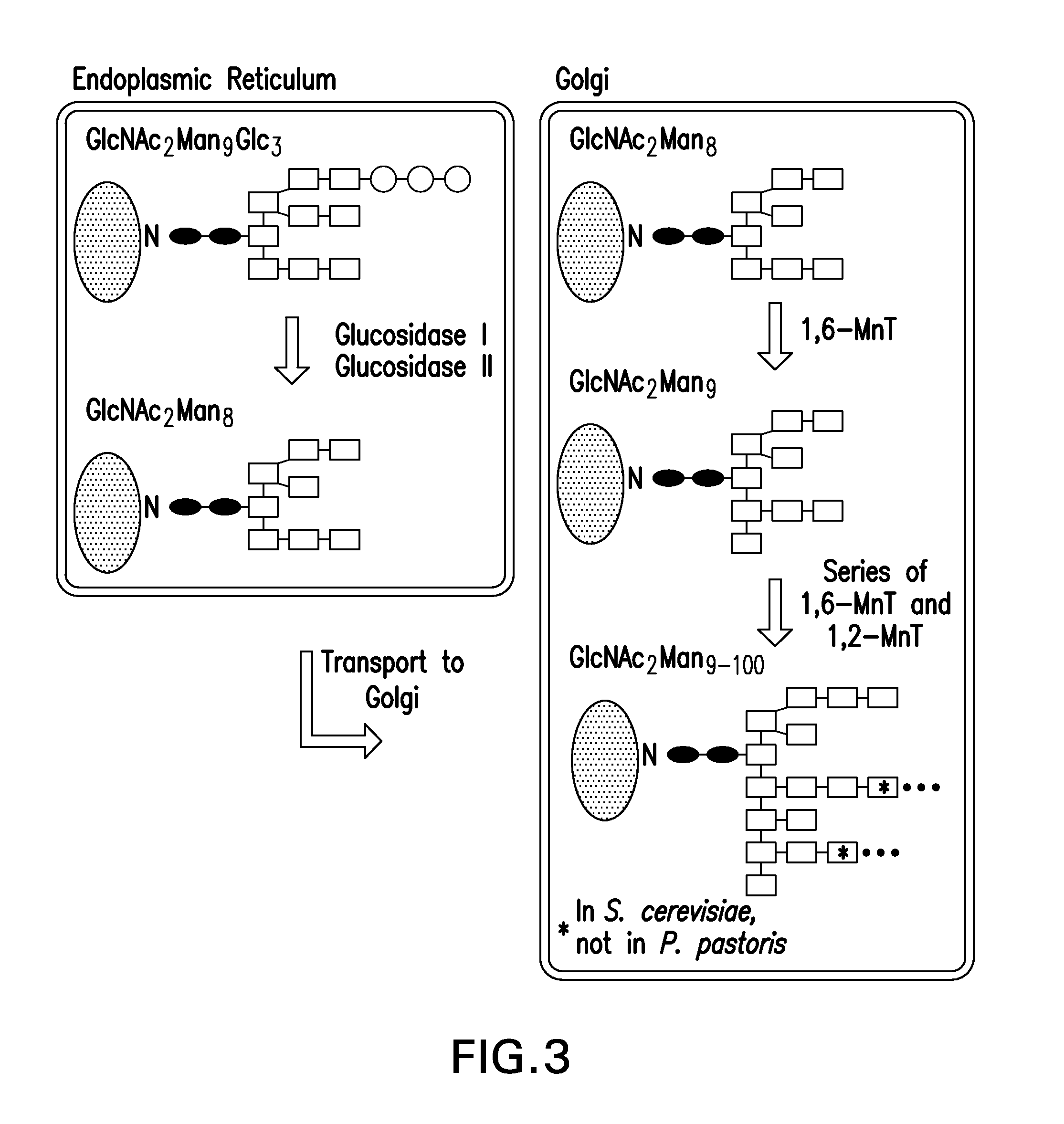Recombinantly expressed insulin polypeptides and uses thereof
a technology of insulin polypeptides and recombinant expression, which is applied in the direction of peptide/protein ingredients, drug compositions, metabolic disorders, etc., can solve the problems of insufficient simple replacement of hormones, inability to provide drugs to patients, and insufficient use of recombinantly expressed insulin polypeptides
- Summary
- Abstract
- Description
- Claims
- Application Information
AI Technical Summary
Benefits of technology
Problems solved by technology
Method used
Image
Examples
example 1
Amine-Functionalized Drug Conjugation with Multivalent Activated Esters in Organic Solvent
[0265]A framework containing N-terminal activated esters is dissolved at 60 mM in 1 ml of anhydrous DMSO followed by the addition of 400 μl (excess) of triethylamine (TEA). The solution is stirred rapidly for 10 minutes at room temperature. In parallel, a 122 mM solution of ligand is prepared in an appropriate volume of anhydrous DMSO. Once dissolved, enough ligand solution is added dropwise over the course of ten minutes to provide a number of reactive equivalents equal to exactly the number of activated ester groups on the framework, N, minus one. For example, if there are N=3 activated ester groups on the framework, then (1×(3−1)×60 mM / 122 mM)=0.98 ml of ligand solution are added. If there are N=4 activated ester groups on the framework, then (1×(4−1)×60 mM / 122 mM)=1.5 ml of ligand solution are added, and so on. After the ligand solution is added, the solution is stirred for two hours at roo...
example 2
B29-Insulin Conjugates with Multivalent Saccharides Produced in Organic Solvent from Unprotected Insulin
[0268]This example makes use of the fact that in the unprotected insulin case, the Lys-B29 epsilon-amino moiety is the most reactive amine, followed by the A1 and then the B1 alpha-amino moieties. Therefore, when unprotected insulin is used as the amine-containing drug the resulting conjugate should be predominantly substituted at the Lys-B29 position. Using the method described in Example 1 and recombinant human insulin (MW=5808 Da, Sigma Aldrich, St. Louis, Mo.) as the amine-containing drug, synthetic insulin-conjugate I-6 was prepared using the TSAT-C6 activated ester framework purchased from Molecular Biosciences (Boulder, Colo.) and AETM as the ligand. The appropriately sized size exclusion medium was Biogel P2 (Bio-Rad Laboratories, Hercules, Calif.), and the appropriately sized ultrafiltration membrane molecular weight cutoff was 3 kDa.
[0269]According to N-terminal sequenci...
example 3
Amine-Functionalized Drug Conjugation with Multivalent Activated Esters in Aqueous Solvent
[0270]This example describes an alternative to the method described in Example 1 in which the reaction is performed in aqueous solvent instead of organic solvent.
[0271]The framework containing N terminal activated esters is dissolved at 60 mM in 6.25 ml of anhydrous DMSO followed by the addition of 2 ml (excess) of triethylamine (TEA). The solution is stirred rapidly for 10 minutes at room temperature. In parallel, a 448 mM solution of ligand is prepared in an appropriate volume of anhydrous DMSO. Once dissolved, enough ligand solution is added dropwise over the course of ten minutes to provide a number of reactive equivalents equal to 1.5 times the number of activated ester groups on the framework, N, minus one. For example, if there are N=3 activated ester groups on the framework, then (1.5×(3−1)×60 mM / 448 mM)×6.25 ml=2.5 ml of ligand solution are added. If there are N=4 activated ester group...
PUM
| Property | Measurement | Unit |
|---|---|---|
| pH | aaaaa | aaaaa |
| time | aaaaa | aaaaa |
| time | aaaaa | aaaaa |
Abstract
Description
Claims
Application Information
 Login to View More
Login to View More - R&D
- Intellectual Property
- Life Sciences
- Materials
- Tech Scout
- Unparalleled Data Quality
- Higher Quality Content
- 60% Fewer Hallucinations
Browse by: Latest US Patents, China's latest patents, Technical Efficacy Thesaurus, Application Domain, Technology Topic, Popular Technical Reports.
© 2025 PatSnap. All rights reserved.Legal|Privacy policy|Modern Slavery Act Transparency Statement|Sitemap|About US| Contact US: help@patsnap.com



